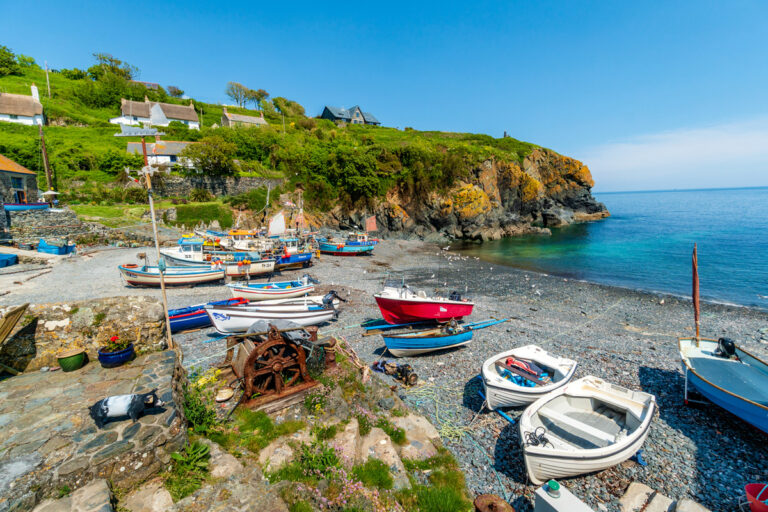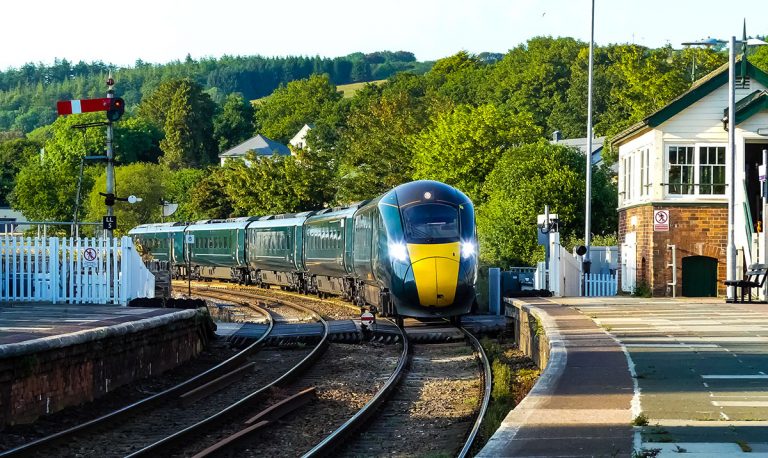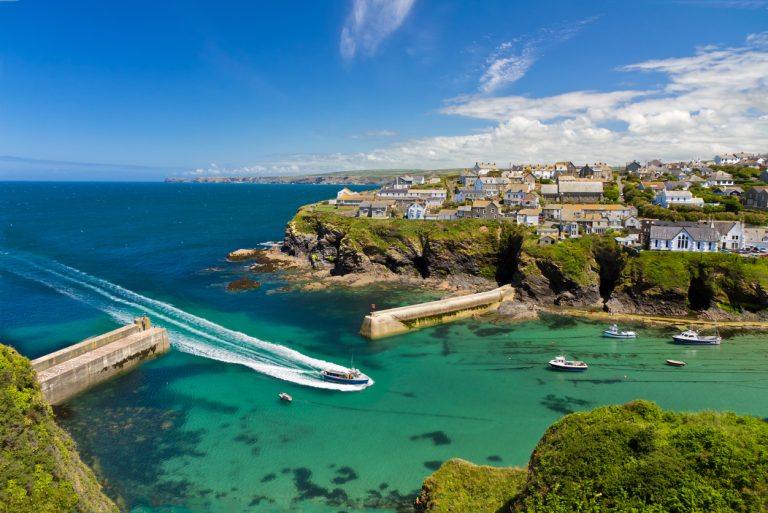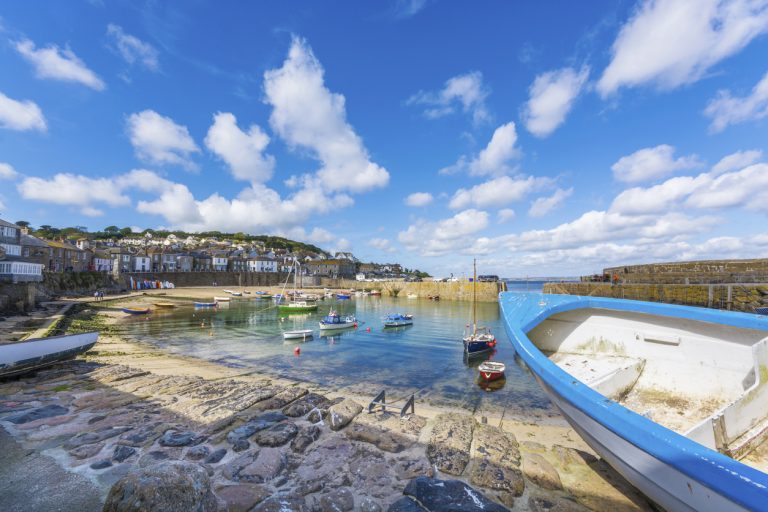How to get from London to Cornwall (2024 guide)
Are you wondering how to get from London to Cornwall? Read on for my full guide!
Fancy swapping the big smoke for Cornwall’s white sands?
This southwestern region, with its quilt-like landscape of quaint fishing villages, windswept coastal paths, and sun-kissed beaches, is often regarded to be the best staycation spot in the UK.
But while it’s in the same country, it’s not remarkably easy to get to. In fact, if you’re looking at ways to get to Cornwall from London, you may find yourself comparing trains, car routes and even factoring in air transport.
If you’re looking for a conclusive guide on getting to Cornwall from London, you’re in the right place.
I grew up in London, but my family are from Cornwall, and now I live on the London to Cornwall route in Exmouth, Devon.
I’ve travelled from London to Cornwall countless times, and I still venture to both destinations frequently to see family – and I go to Cornwall a lot for work.
So, I know all about these methods of transport and can provide you with my full opinion on each, plus pros and cons and how to plan your trip.
This blog post may contain affiliate links.
How to get from London to Cornwall: train, car, coach or plane!
Whether you fancy train travel, plan on driving all the way down to Land’s End or have found some cheap flights, here’s a breakdown of the best ways to get from London to Cornwall.
Trains to Cornwall from London (my favourite way to get from London to Cornwall)
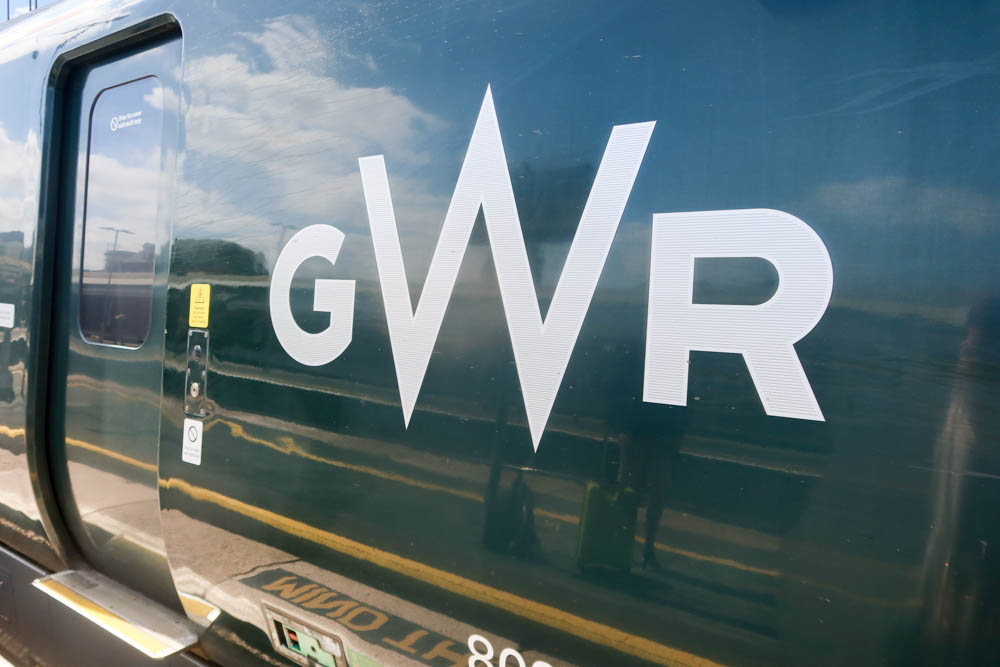
You can travel to Cornwall from London by train on the London Paddington to Penzance route.
For any train aficionados, it’s a delight.
The route takes you due west, first to Reading, then drops down into Somerset by Taunton and to Exeter St Davids.
It then drops down past the River Exe (look out for Exmouth on the opposite side – this is where I live!) and passes through the Dawlish Warren to Dawlish seaside route, widely regarded to be one of the most beautiful railways in the UK.
The Devon section of the railway is particularly lovely.
It ultimately crosses over the River Tamar to reach Saltash, and then delves further into Cornwall.
Most of the Cornwall stops are inland, so you’ll generally see residential areas and a bit of Cornish countryside before it terminates at Penzance.
The railway stops at the following towns before Penzance:
- Saltash
- Liskeard (can change to trains to Looe)
- St Austell
- Par (can change to trains to Newquay)
- Bodmin Parkway
- Truro
- Camborne
- Redruth
- Hayle
- St Erth (can change to trains to St Ives)
There aren’t that many branch railway lines in Cornwall, but those that do exist are mentioned above.
When the trains go right, they’re fantastic.
GWR’s fleet that heads down to Cornwall is typically quite modern, with legroom, power sockets and good AC.
Book ahead and reserve a window seat (or even first class if you’re feeling fancy!), get to London Paddington with plenty of time and get ready for a relaxing journey to the West!
The journey by train takes 5-8 hours, depending on where in Cornwall you’re going and what service you’re travelling on.
The sustainable choice
Part of the reason why I favour the train over other methods is that it’s one of the most environmentally friendly ways to travel – when taking to the rails, your carbon footprint is substantially less than it would be if you chose to drive or fly.
Money-saving tips for London to Cornwall trains

Cheap train tickets can seem non-existent in the UK at times – it’s the main drawback to taking the rail option.
However, there are two ways that I save money when taking the train from London to Cornwall.
1. Trainline
Trainline has a user-friendly platform which can store your tickets and alerts you to any journey changes, but the real reason to use it is for the SplitSave feature.
This ingenious tool splits your journey into multiple tickets, taking advantage of cheaper fares for different legs of the trip.
For example, you might have one ticket from London to Exeter, and then another ticket from Exeter to Penzance.
You don’t need to do anything particular, and usually, you’ll be in the same seat for the whole journey – just make sure you show the right ticket for the right part of the trip.
2. Railcards
If you’re a frequent traveller or part of a specific group, look into railcards.
Railcards offer exclusive discounts and perks for various demographics, including young adults, families, seniors, and more.
Before embarking on your journey, visit the Railcard website and see if there’s a card that suits your needs!
Night Riviera Sleeper
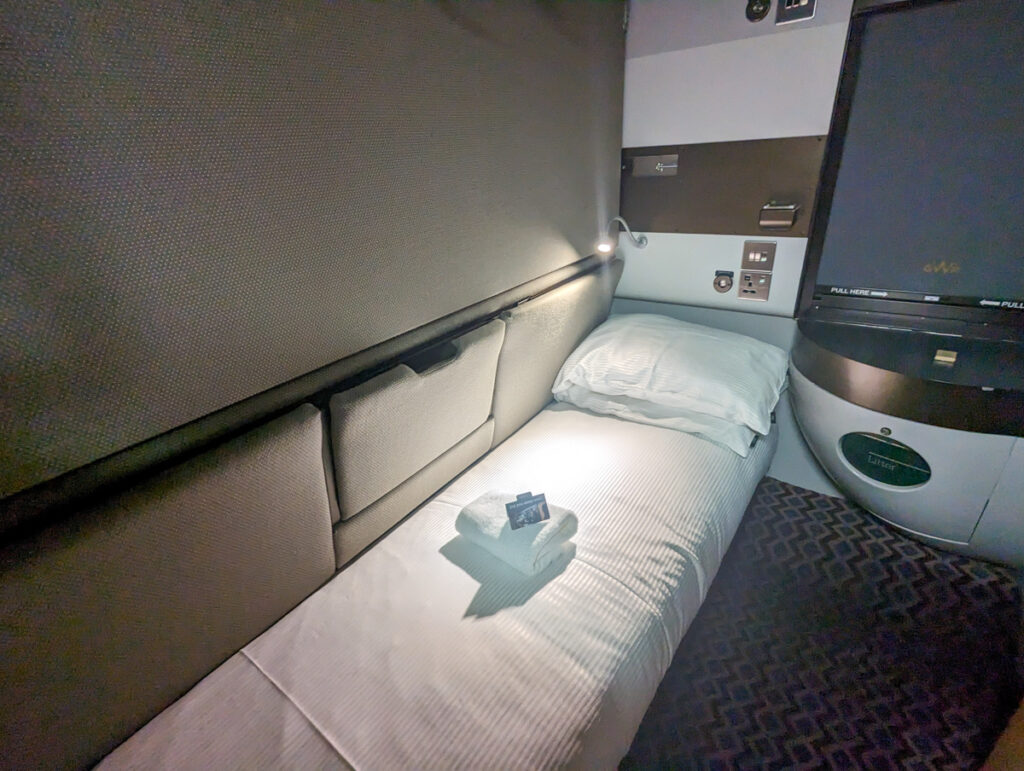
Fancy falling asleep in the capital and waking up in the far southwest of England?
I bring you the Night Riviera Sleeper train, a direct route between Paddington and Penzance.
While you snuggle down in your compartment, the night train to Cornwall whisks you through the English countryside, making its unhurried way (it’s about an eight-hour route) to the far southwest.
Drift off to the rhythmic sounds of the rails and wake up in a completely different landscape, refreshed and ready to start your Cornish holiday!
Check out my YouTube video about it!
Or, I wrote a full blog post about my experience on the train.
GWR first class

Fancy a slice of luxury on your journey down to the South West?
Sometimes GWR first class can be very affordable!
They offer more spacious seating, quiet compartments, complimentary snacks, and drinks and stronger WiFi to keep you connected en route.
Check out my GWR first-class review here
Advantages and disadvantages of travelling from London to Cornwall by train
| Advantages | Disadvantages |
|---|---|
| Eco-friendly: Trains are a more environmentally friendly choice compared to cars or planes. | Journey Time: Depending on the service, it can take up to five hours to reach Cornwall from London. |
| Comfort: Plenty of legroom, plus amenities like Wi-Fi and food service, especially in GWR first class. | Cost: Train tickets, especially first-class, can be pricey. |
| Convenience: Direct services from London Paddington to Penzance mean no changes or transfers. | Schedule: You’re bound to the train timetable, which may not always suit your personal schedule. |
| Night Travel: The Night Riviera Sleeper service offers the possibility to travel overnight. | Unpredictability: Train strikes and other issues can cause delays or cancellations. |
By Car

Hitting the road?
Most people visit Cornwall by car (not least because it means they can do a Cornwall road trip), but there are a few things to consider when you’re doing so.
Obviously, a car gives you more freedom – you can stop at places on the way and you’ll have the vehicle when you’re in Cornwall (which is the biggest draw for most).
If there are a few of you, it’s also usually cheaper than taking the train.
But, cars pose other issues, including traffic and parking (and having a car to begin with!).
There are two main ways to drive to Cornwall: the route via the M3, A303 and A30 (or A38) or the M4, M5 and A30/38 route.
Route via M3/A303/A30 (or A38 for southern destinations)

The first and most scenic route (although a lot of it is fields and roundabouts) is via the M3, from which you then pick up the A303 and the A30.
Personally, I go this way, because I find the A303 a bit more stimulating than just driving on the motorway – personally, the monotony of the motorway makes the journey feel like it’s going on forever!
The drive time is sometimes slightly longer, but there’s less of a risk of standstill traffic (most often, the traffic’s caused by slow-moving tractors!).
Many choose this route so they can stop off at one particular attraction – you may have heard of it – Stonehenge.
Stonehenge literally sits on the side of the A303 and provides a convenient stopover on this route.
Also on the way is Longleat, England’s first safari park and the home of the Marquesses of Bath.
With its stately home, hedge maze, and exotic animal encounters, Longleat’s a prime break to stretch your legs and get a quick safari experience without having to fly halfway around the world.
If you’re visiting places like Looe or Fowey, take the A38 instead of the A30, which leads over the Tamar Bridge.
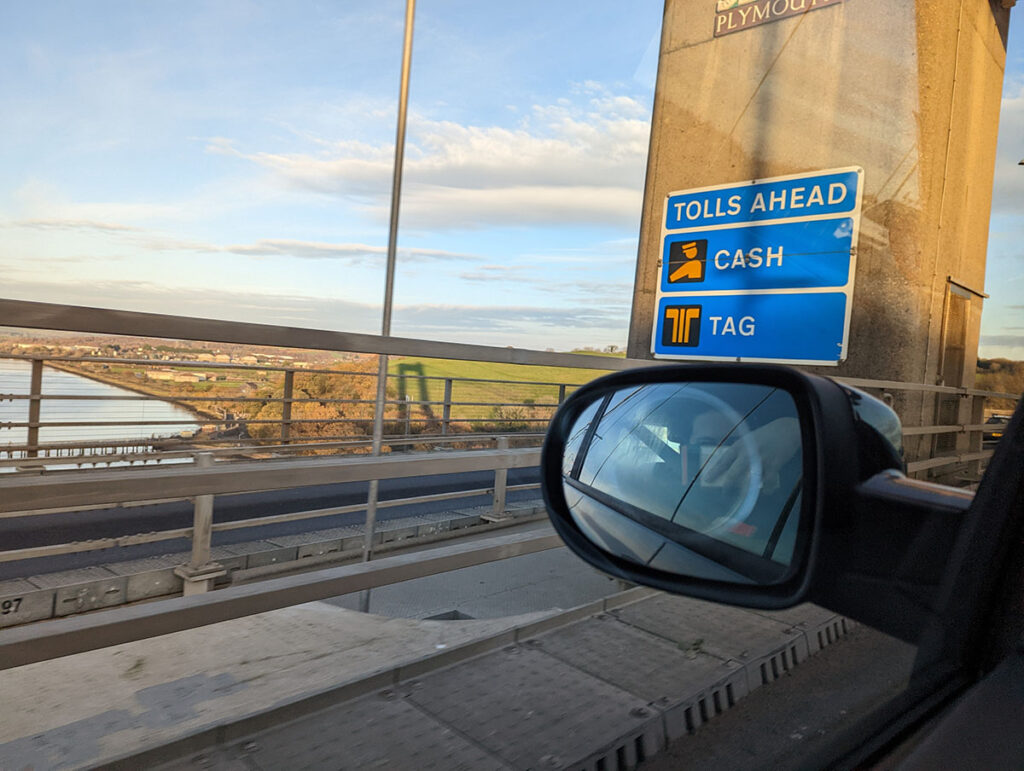
Route via M4/M5/A30 (or A38 for southern destinations)
Alternatively, take the route via the M4, M5, and A30 (or divert onto the A38 for southern destinations).
This is favoured by those who live closer to the M4, and it’s less stop/ start than the A303 route.
There are plenty of places to stop off here too, such as Cotswold villages like Castle Combe or Lacock.
Driving in Cornwall
Upon reaching Cornwall, you’ll find yourself on narrower country lanes lined with high hedgerows. If you’re not used to these types of roads, they can be a little unnerving at first.
Driving in Cornwall during the summer months requires a bit of extra patience – the Duchy spills over with traffic, which its roads are not made to accommodate!
Advantages and disadvantages of driving to Cornwall
| Advantages | Disadvantages |
|---|---|
| Flexibility: Go where you want, when you want. | Journey Time: It’s a long drive – about five to six hours without stops. |
| Control: You decide rest stops and travel speed. | Traffic: The roads can get busy, especially in summer. |
| Scenic Routes: You can take in the English countryside and stop at attractions along the way. | Navigation: Cornwall’s lanes can be narrow and winding. |
By Coach

If you’re on a tighter budget, or simply prefer to leave the driving to someone else, taking a coach to Cornwall could be a viable option.
Let’s delve into the details.
Coach Services
National Express operates direct services from London Victoria Coach Station to various destinations in Cornwall, including Newquay, Truro, and Penzance.
Journey durations vary, with the quickest around 8 hours and the longest stretching to 12 hours or more, depending on the specific route and traffic conditions.
Experience
While it’s the slowest option, the coach allows you to sit back and watch the world go by without worrying about navigating the roads yourself.
Remember to bring a good book, download a few episodes of your favourite podcast, or catch up on some sleep during the journey.
If you’re not prone to travel sickness and don’t mind zoning out for a few hours, it could be a good penny-pinching option.
Reliability
While coaches usually adhere to their timetables, delays can happen, particularly during peak travel times when traffic can be heavier.
So do allow for some leeway in your travel schedule.
Advantages and disadvantages of taking a coach from London to Cornwall
| Advantages | Disadvantages |
|---|---|
| Cost-effective: The coach is typically the cheapest option. | Time-consuming: It’s the slowest way to reach Cornwall from London. |
| Relaxing: You can sit back and enjoy the ride, with no need to concentrate on driving. | Potential Delays: Coaches can fall victim to traffic and sometimes turn up late. |
| Eco-friendly: Coaches are more environmentally friendly than driving or flying. | Comfort: Limited legroom and amenities compared to other options. |
By Air
Travelling from London to Cornwall by air offers a swift and direct way to reach your holiday destination – but it has its inconveniences, and is the least climate-friendly method of all these options!
Airports and Airlines
The main airport in Cornwall is Newquay Airport, serviced by British Airways with direct flights from London Gatwick Airport and Stansted Airport.
The flight time is typically a little over an hour, making it technically the fastest way to travel between London and Cornwall – but do bear in mind that you’ll need to factor in time getting to and from the airport at each end, plus you’ll need to arrive at the airport at least an hour before.
Environmental Considerations
While flying is quick, do consider the environmental impact.
Air travel typically has a higher carbon footprint compared to other modes of transport, especially the train.
Cost
Air travel can be more costly than other methods, particularly during peak holiday seasons.
That said, with advance planning and flexible travel dates, you can often find competitive fares.
The cheapest flights will be on weekdays out of the school holidays.
Advantages and disadvantages of flying from London to Cornwall
| Advantages | Disadvantages |
|---|---|
| Speed: The fastest way to travel from London to Cornwall. | Environmental Impact: Flying typically has a higher carbon footprint than other modes of transport. |
| Convenience: Direct flights from London Heathrow to Newquay. | Cost: Air travel can be more expensive, especially during peak travel times. |
| Views: Aerial views of the Cornish coastline and landscapes. | Schedule: You’re subject to the airline’s flight schedule and potential delays or cancellations. |
Getting Around in Cornwall

Now you’ve made it to Cornwall, how do you get around the region?
If you have a car, then it’s simple – you can drive from one end of Cornwall to another in two hours.
Without a car, navigating Cornwall can be a bit of a challenge, but as long as you plan public transport, you should be able to see at least the surrounding area.
Cornwall isn’t known for its well-connected public transport system, and some areas are more accessible than others.
So do plan your accommodation strategically and align it with your sightseeing goals and transport options.
Stay on the main train line
The main train line in Cornwall passes through key destinations such as Penzance, Camborne, Redruth, and Truro.
Staying somewhere along this line – in a place like Hayle, for example – allows you to hop on and off the train to visit these locations and explore their attractions.
Stay in one area and take local buses
Another approach is to base in one location and take advantage of local buses for day trips to surrounding areas.
Newquay, a renowned surfing town with gorgeous beaches, is ideal for this.
Spend your days soaking up the sun on the beach, and use local buses for outings to places like Truro and Perranporth.
Be wary of North East Cornwall!

Are you venturing to North East Cornwall? (places like Bude, Boscastle, Tintagel, Port Isaac and Polzeath).
If so, be prepared for fewer public transport options.
Areas like Bude, Boscastle, and Tintagel are served by a single bus line – the 95 – which runs every two hours and not at all on Sundays!
When my partner and I hiked the South West Coast Path in 2021, we found ourselves resorting to taxis on several occasions due to the sparse bus services in this area.
Getting to Cornwall from London FAQ
Can you get to Cornwall from London by train?
Absolutely, you can! Regular direct train services run from London Paddington station to various destinations in Cornwall, such as Penzance, Truro, and St Austell. This offers a comfortable, scenic journey with beautiful vistas of the English countryside, allowing you to start your holiday before you even arrive.
How do I get from London to Cornwall without a car?
There are numerous options for travelling from London to Cornwall without a car. These include public transport services such as trains or coaches, with direct trains from London Paddington and various coach services available. If time is a key factor for you, consider flying: Newquay airport is well-connected with daily flights from London.
Which London train station goes to Cornwall?
London Paddington is the key station for services to Cornwall. From Paddington, you can catch direct services via Great Western Railway to a range of destinations within Cornwall, including the popular towns of Penzance, Truro, and St Austell. Always ensure to check the specific train times as schedules can vary.
What is the easiest way to get to Cornwall?
The “easiest” way can depend on individual circumstances and preferences. If speed is your top priority, a flight from London to Newquay can get you there quickly. However, if you prefer a relaxed journey, a train ride from London Paddington can offer both comfort and beautiful views of the English countryside.
Can you do a day trip to Cornwall from London?
A day trip from London to Cornwall is possible, but it’s worth noting that it would be a very long day. The journey itself can take between 4 to 5 hours one way, depending on your chosen mode of transport. That leaves limited time for sightseeing before you need to start the return journey.
What train line goes to Cornwall?
Cornwall is served by the Great Western Railway line. Trains from London Paddington on this line travel through several picturesque towns and areas in Cornwall, with key stops at destinations such as Penzance, Truro, and St Austell. Be sure to check the train schedule for exact timings and frequency.
Can I fly to Cornwall without a passport?
Yes, you certainly can fly to Cornwall from within the UK without a passport. Domestic flights in the UK do not require a passport, but you will need some form of official photo identification, such as a driving licence or other acceptable ID, as per the airline’s guidelines.
Does Cornwall UK have an airport?
Yes, Cornwall does have an airport. Newquay Airport, located on the county’s northern coast, is the main airport serving Cornwall. It offers regular flights to and from several UK cities as well as a few international destinations. Always check with your specific airline for exact flight schedules and any luggage requirements.
How long does it take to get to Cornwall from London by coach?
The coach journey from London to Cornwall typically takes anywhere from 7 to 10 hours, depending on the specific service and traffic conditions. While it is a longer journey compared to other methods, coaches are often the most budget-friendly option for travellers.
How long is the train journey from Cornwall to London?
The direct train journey from Cornwall to London generally takes around 4 to 5 hours, though this can vary depending on the departure and arrival stations. The trains, while offering a swift journey, also provide various amenities, such as Wi-Fi and onboard dining options, adding to the comfort of your travel.
Are you ready to journey to Cornwall?
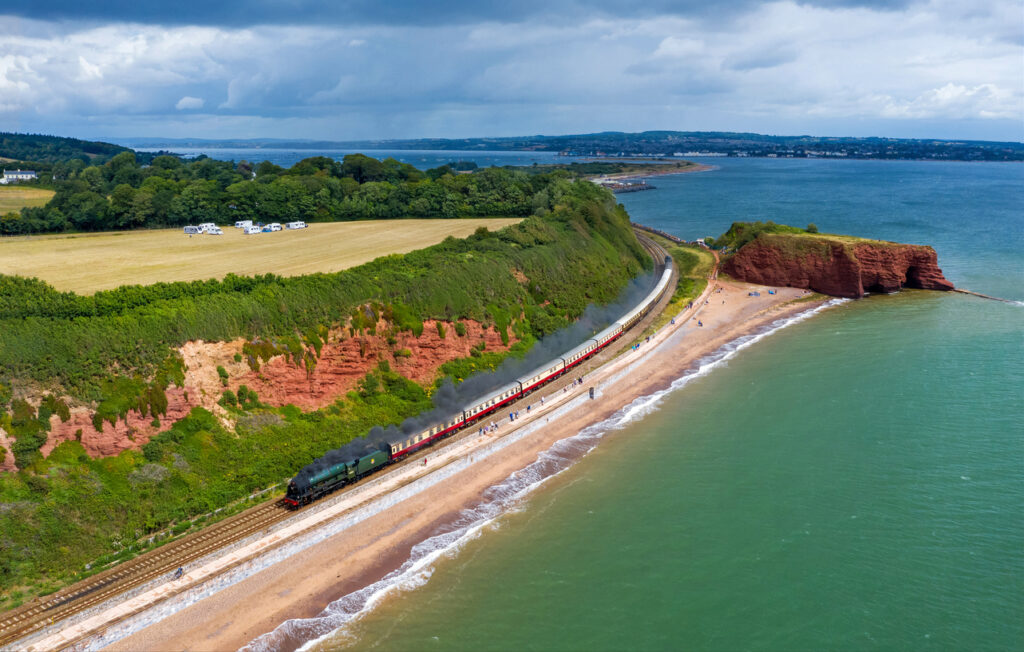
With regular train services, frequent flights and buses ploughing the distance from London to Cornwall, you won’t be short of ways to reach the dramatic landscape of the West Country.
Do check out the rest of my Cornwall posts for things to do once you reach the southwestern peninsula, and feel free to send me a message on Instagram if you have any questions.

